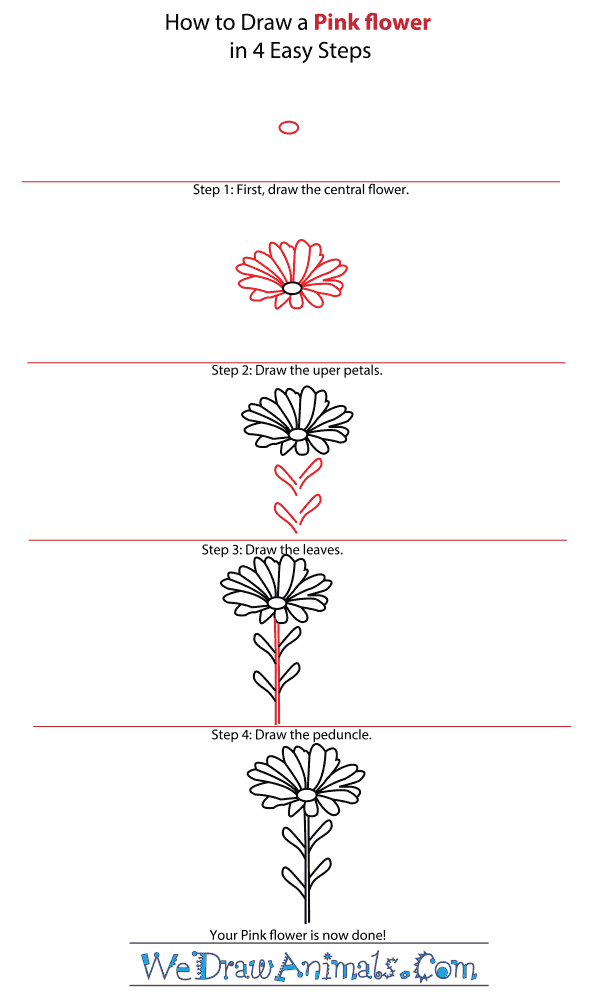In this quick tutorial you'll learn how to draw a Pink Flower in 4 easy steps - great for kids and novice artists.
The images above represents how your finished drawing is going to look and the steps involved.
Below are the individual steps - you can click on each one for a High Resolution printable PDF version.
At the bottom you can read some interesting facts about the Pink Flower.
Make sure you also check out any of the hundreds of drawing tutorials grouped by category.
How to Draw a Pink Flower - Step-by-Step Tutorial
Step 1: First draw a circle to create the center of the flower.
Step 2: Then draw skinny oblong petals all the way around the center, some petals should overlap eachother.
Step 3: Next draw the leaves which should be shaped similar to the petals with two on either side below the flower.
Step 4: Lastly draw the stem by drawing a staight line from the bottom of the flower down below the leaves.
Interesting Facts about Pinks
Pinks or Dianthus are small pink flowers that grow on bushes. The classic image of a Pinks bush involves English cottages or public flower landscaping. Their bushes are a blue green color and usually produce pink flowers. However Dianthus can be red, white, or lavender colored. The bushes grow between 6 inches and 3 feet. They bloom during the spring and are most often seen in wooded areas. Dianthuses are the wild versions of Sweet Williams and the more well-known Carnation. Pinks are flat flowers that have notches in the petals. They grow will in rock gardens and really tough plants.
Did you know?
- Pinks can’t be killed off by hungry deer.
- There are 300 species of Dianthus.
- Pinks have to be divided into separate plants every 3 to 4 years.
- The only colors Dianthus doesn’t grow in are blue.
- Some variations of Pinks can bloom 2 or 3 times a year.
Activity: The Sweet William plant is a type of Pink that grows really easy. For easy beginners plant for kids; plant Sweet William seeds. The plants will teach kids how to care for flowers and add a touch of color to landscaping.





